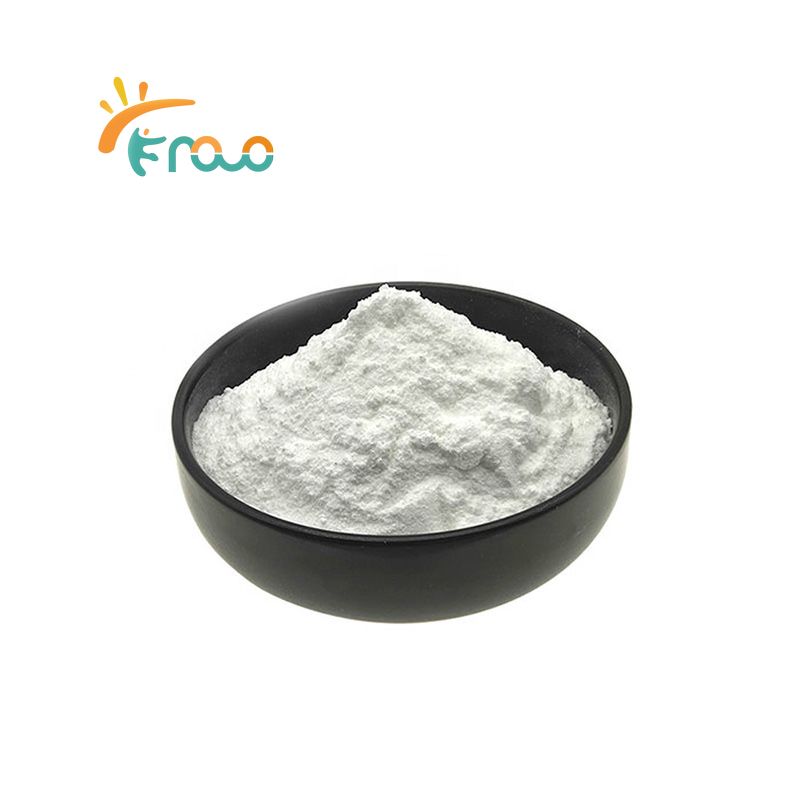ž¦┘䞯žŁ┘ģž¦žČ ž¦┘䞯┘ģ┘Ŗ┘å┘Ŗž® ┘ģž▒┘āž©ž¦ž¬ ž╣žČ┘ł┘Ŗž® ž¬┘Åž╣ž»┘æ ž¦┘ä┘äž©┘垦ž¬ ž¦┘䞯ž│ž¦ž│┘Ŗž® ┘ä┘äž©ž▒┘łž¬┘Ŗ┘垦ž¬žī ┘łž¬┘äž╣ž© ž»┘łž▒┘ŗž¦ ┘ģžŁ┘łž▒┘Ŗ┘ŗž¦ ┘ü┘Ŗ ž¼┘ģ┘Ŗž╣ ž¦┘äž╣┘ģ┘ä┘Ŗž¦ž¬ ž¦┘äž©┘Ŗ┘ł┘ä┘łž¼┘Ŗž® ž¬┘éž▒┘Ŗž©┘ŗž¦. ┘Ŗ┘ÅžĄ┘å┘æ┘ü ž¦┘äž╣┘ä┘ģž¦žĪ ž¦┘䞯žŁ┘ģž¦žČ ž¦┘䞯┘ģ┘Ŗ┘å┘Ŗž® ž¦┘ä┘é┘Ŗž¦ž│┘Ŗž® ž¦┘äž╣ž┤ž▒┘Ŗ┘å žź┘ä┘ē ┘üž”ž¬┘Ŗ┘å ž©┘垦žĪ┘ŗ ž╣┘ä┘ē ┘éž»ž▒ž® žŻž¼ž│ž¦┘ģ┘垦 ž╣┘ä┘ē ž¬ž«┘ä┘Ŗ┘é┘枦: žŻžŁ┘ģž¦žČ žŻ┘ģ┘Ŗ┘å┘Ŗž® žŻž│ž¦ž│┘Ŗž® ┘łž║┘Ŗž▒ žŻž│ž¦ž│┘Ŗž®.
ž¦┘䞯žŁ┘ģž¦žČ ž¦┘䞯┘ģ┘Ŗ┘å┘Ŗž® ž¦┘䞯ž│ž¦ž│┘Ŗž®
ž¦┘䞯žŁ┘ģž¦žČ ž¦┘䞯┘ģ┘Ŗ┘å┘Ŗž® ž¦┘䞯ž│ž¦ž│┘Ŗž® ž¦┘䞬ž│ž╣ž® (ž¦┘ä┘ć┘Ŗž│ž¬┘Ŗž»┘Ŗ┘åžī ž¦┘䞯┘Ŗž▓┘ł┘ä┘Ŗ┘łž│┘Ŗ┘åžī ž¦┘ä┘ä┘Ŗ┘łž│┘Ŗ┘åžī
ž¦┘ä┘䞦┘Ŗž│┘Ŗ┘å
┘䞦 ┘Ŗž│ž¬žĘ┘Ŗž╣ ž¼ž│┘ģ ž¦┘äžź┘åž│ž¦┘å žź┘垬ž¦ž¼ ž¦┘䞯žŁ┘ģž¦žČ ž¦┘䞯┘ģ┘Ŗ┘å┘Ŗž® ž¦┘䞯ž│ž¦ž│┘Ŗž® (┘ģž½┘ä ž¦┘ä┘ģ┘Ŗž½┘Ŗ┘ł┘å┘Ŗ┘åžī ┘łž¦┘ä┘ü┘Ŗ┘å┘Ŗ┘ä žŻ┘䞦┘å┘Ŗ┘åžī ┘łž¦┘äž½ž▒┘Ŗ┘ł┘å┘Ŗ┘åžī ┘łž¦┘䞬ž▒┘Ŗž©ž¬┘ł┘üž¦┘åžī ┘łž¦┘ä┘üž¦┘ä┘Ŗ┘å)žī ž©┘ä ┘Ŗž¼ž© ž¦┘䞣žĄ┘ł┘ä ž╣┘ä┘Ŗ┘枦 ┘ģ┘å ┘ģžĄž¦ž»ž▒ ž║ž░ž¦ž”┘Ŗž®. ž¬ž¬┘łž¦┘üž▒ ┘ćž░┘ć ž¦┘䞯žŁ┘ģž¦žČ ž©┘āž½ž▒ž® ┘ü┘Ŗ ž¦┘äž©ž▒┘łž¬┘Ŗ┘垦ž¬ ž¦┘ä┘āž¦┘ģ┘äž®žī ┘ģž½┘ä ž¦┘ä┘䞣┘ł┘ģ ┘łž¦┘äž©┘ŖžČ ┘ł┘ģ┘垬ž¼ž¦ž¬ ž¦┘䞯┘äž©ž¦┘å ┘łž©ž╣žČ ž¦┘䞬ž▒┘ā┘Ŗž©ž¦ž¬ ž¦┘ä┘åž©ž¦ž¬┘Ŗž®. ┘éž» ┘Ŗžżž»┘Ŗ ┘å┘鞥 žŻ┘Ŗ žŁ┘ģžČ žŻ┘ģ┘Ŗ┘å┘Ŗ žŻž│ž¦ž│┘Ŗ žź┘ä┘ē žČž╣┘ü ┘ü┘Ŗ ž¬ž«┘ä┘Ŗ┘é ž¦┘äž©ž▒┘łž¬┘Ŗ┘åžī ┘ł┘ćž▓ž¦┘ä ž¦┘äž╣žČ┘䞦ž¬žī ┘ł┘ģžČž¦ž╣┘üž¦ž¬ žĄžŁ┘Ŗž® ┘ģž«ž¬┘ä┘üž®.
ž¦┘䞯žŁ┘ģž¦žČ ž¦┘䞯┘ģ┘Ŗ┘å┘Ŗž® ž║┘Ŗž▒ ž¦┘䞯ž│ž¦ž│┘Ŗž®
ž¦┘䞯žŁ┘ģž¦žČ ž¦┘䞯┘ģ┘Ŗ┘å┘Ŗž® ž║┘Ŗž▒ ž¦┘䞯ž│ž¦ž│┘Ŗž® ž¦┘䞣ž¦ž»┘Ŗž® ž╣ž┤ž▒ (ž¦┘䞯┘䞦┘å┘Ŗ┘åžī ž¦┘䞯ž▒ž¼┘Ŗ┘å┘Ŗ┘åžī ž¦┘䞯ž│ž©ž¦ž▒ž¦ž¼┘Ŗ┘åžī žŁ┘ģžČ ž¦┘䞯ž│ž©ž¦ž▒ž¬┘Ŗ┘āžī
ž¦┘äž│┘Ŗž│ž¬┘Ŗ┘å
žŁ┘ģžČ ž¦┘äž¼┘ä┘łž¬ž¦┘ģ┘Ŗ┘āžī ž¦┘äž¼┘ä┘łž¬ž¦┘ģ┘Ŗ┘åžī
ž¦┘äž¼┘䞦┘Ŗž│┘Ŗ┘å
┘Ŗ┘ģ┘ā┘å ┘ä┘äž¼ž│┘ģ ž¬žĄ┘å┘Ŗž╣ ž¦┘䞯žŁ┘ģž¦žČ ž¦┘䞯┘ģ┘Ŗ┘å┘Ŗž® ž¦┘䞯ž│ž¦ž│┘Ŗž® (┘ģž½┘ä ž¦┘äž©ž▒┘ł┘ä┘Ŗ┘åžī ┘łž¦┘äž│ž▒┘Ŗ┘åžī ┘łž¦┘䞬┘Ŗž▒┘łž▓┘Ŗ┘å) ┘ģ┘å ┘ģž▒┘āž©ž¦ž¬ žŻž«ž▒┘ēžī žŁž¬┘ē ┘ä┘ł ┘ä┘ģ ž¬┘Åž│ž¬┘ć┘ä┘ā ┘ģž©ž¦ž┤ž▒ž®┘ŗ. ┘ł┘ģž╣ ž░┘ä┘āžī ┘üžź┘å ┘łžĄ┘ü┘枦 ž©žŻ┘å┘枦 "ž║┘Ŗž▒ žŻž│ž¦ž│┘Ŗž®" ┘䞦 ┘Ŗž╣┘å┘Ŗ žŻ┘å┘枦 ž║┘Ŗž▒ ┘ģ┘ć┘ģž®žī ┘ü┘ć┘Ŗ ž¬ž©┘é┘ē žČž▒┘łž▒┘Ŗž® ┘äžź┘垬ž¦ž¼ ž¦┘ä┘å┘łž¦┘é┘ä ž¦┘äž╣žĄž©┘Ŗž®žī ┘ł┘łžĖ┘Ŗ┘üž® ž¦┘ä┘ģ┘垦ž╣ž®žī ┘łžźžĄ┘䞦žŁ ž¦┘䞯┘åž│ž¼ž®.
žŁž¦┘䞦ž¬ žŻž│ž¦ž│┘Ŗž® ┘ģž┤ž▒┘łžĘž®: ┘éž» ž¬┘ÅžĄž©žŁ ž©ž╣žČ ž¦┘䞯žŁ┘ģž¦žČ ž¦┘䞯┘ģ┘Ŗ┘å┘Ŗž® ž║┘Ŗž▒ ž¦┘䞯ž│ž¦ž│┘Ŗž® žŻž│ž¦ž│┘Ŗž® ┘ģž┤ž▒┘łžĘž® žŻž½┘垦žĪ ž¦┘ä┘ģž▒žČžī žŻ┘ł ž¦┘äžźž¼┘枦ž»žī žŻ┘ł ┘ģž▒ž¦žŁ┘ä žŁ┘Ŗž¦ž¬┘Ŗž® ┘ģ┘ÅžŁž»ž»ž® ž╣┘åž»┘ģž¦ ┘䞦 ┘Ŗž│ž¬žĘ┘Ŗž╣ ž¦┘äž¼ž│┘ģ žź┘垬ž¦ž¼ ┘ā┘ģ┘Ŗž¦ž¬ ┘āž¦┘ü┘Ŗž®. ž╣┘ä┘ē ž│ž©┘Ŗ┘ä ž¦┘ä┘ģž½ž¦┘äžī ┘Ŗ┘ÅžĄž©žŁ ž¦┘䞯ž▒ž¼┘Ŗ┘å┘Ŗ┘å žČž▒┘łž▒┘Ŗ┘ŗž¦ ┘ä┘äž▒žČž╣ ┘ł┘ģž▒žČ┘ē ž¦┘䞥ž»┘ģž¦ž¬.
┘ŖžČ┘ģ┘å ž¬┘垦┘ł┘ä ┘ā┘䞦 ž¦┘ä┘å┘łž╣┘Ŗ┘å ┘ģ┘å ž¦┘䞯žŁ┘ģž¦žČ ž¦┘䞯┘ģ┘Ŗ┘å┘Ŗž® ž©ž┤┘ā┘ä ┘ģž¬┘łž¦ž▓┘å ┘ģ┘å ž«┘䞦┘ä ┘ģžĄž¦ž»ž▒ ž¦┘äž©ž▒┘łž¬┘Ŗ┘å ž¦┘ä┘ģž¬┘å┘łž╣ž® ┘łžĖž¦ž”┘ü ž¦┘äž¼ž│┘ģ ž¦┘ä┘ģž½ž¦┘ä┘Ŗž®žī ┘ģ┘å ž¦┘䞣┘üž¦žĖ ž╣┘ä┘ē ž¦┘äž╣žČ┘䞦ž¬ žź┘ä┘ē žź┘垬ž¦ž¼ ž¦┘äžź┘åž▓┘Ŗ┘ģž¦ž¬ ┘łžŻ┘āž½ž▒ ┘ģ┘å ž░┘ä┘ā.


 ž¦┘äž╣ž▒ž©┘Ŗž®
ž¦┘äž╣ž▒ž©┘Ŗž®















